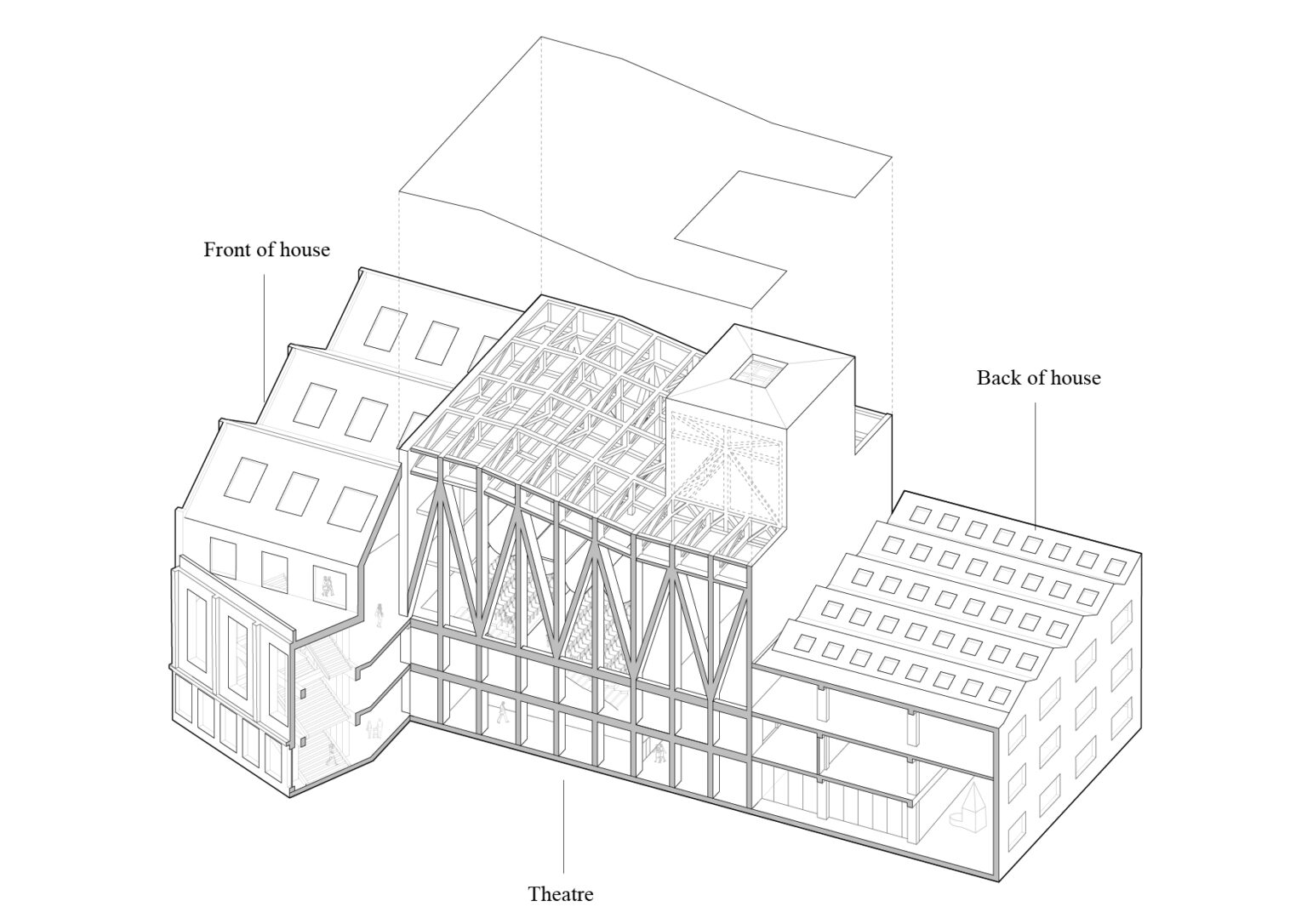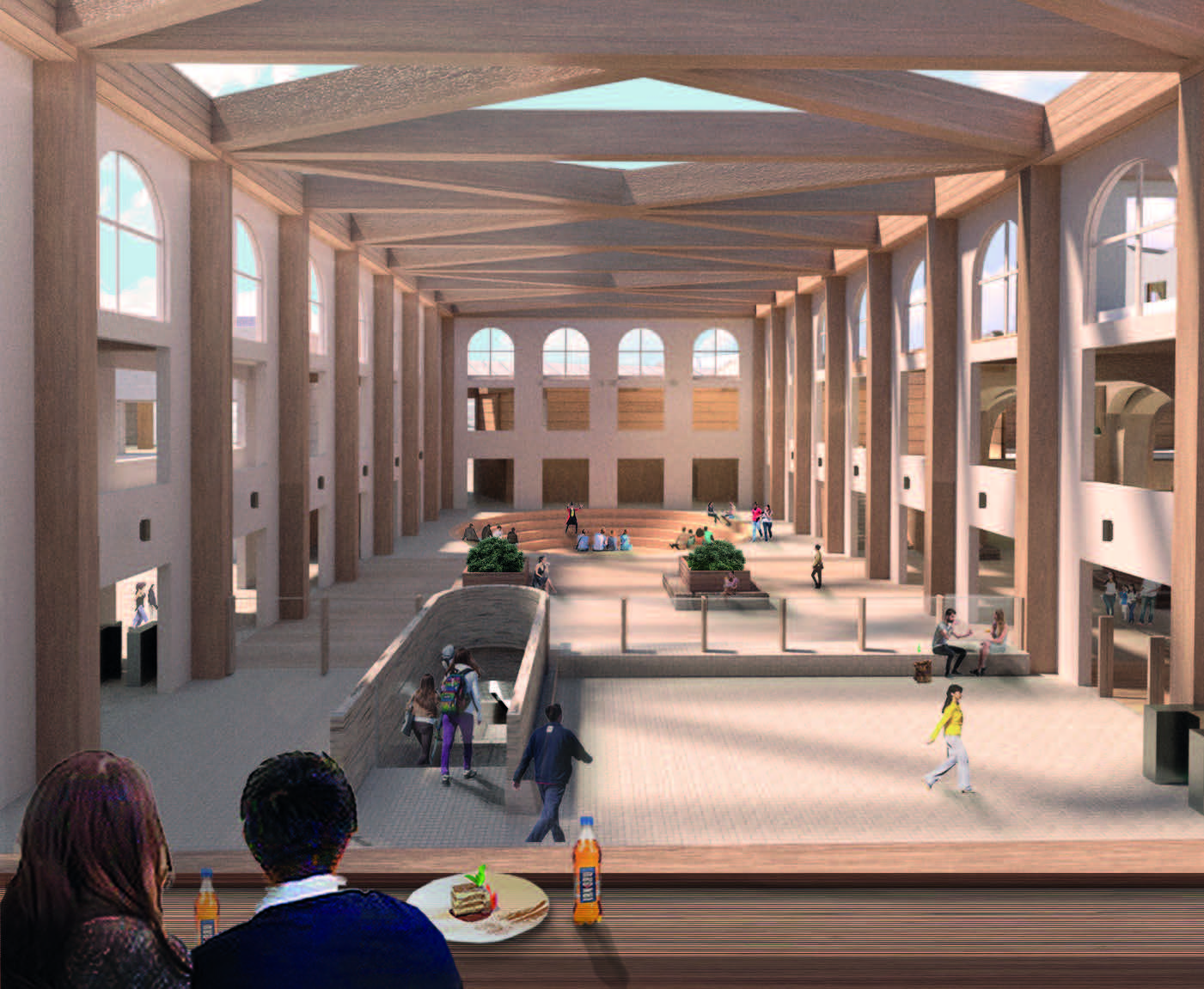Over the years, Glasgow witnesses all kinds of transformation from an industrial centre to culture and creative hub. Many regeneration plans have been carried out to help Glasgow to grow as a great city. In the Vision 2035 report, the city council envisions that the city centre of Glasgow will be home to 40,000 citizens, which is a double of the current population. The intention of transforming Glasgow into a compact city would benefit both the city and its citizens, as the concentration of economic opportunities and cultural activities enhance the city’s sustainability. However, densification of the built environment and the residential population does not necessarily guarantee intensity and vibrancy in an urban environment.
This proposal aims to regenerate the stagnant area in Laurieston, by repurposing the underused railway viaduct arches and the car parking dominated subway station site to reform the unattractive street front of Eglinton street. This thesis investigates the hybrid qualities that would produce an intensity of public life. The complex consists of a theatre, a community centre, a range of urban rooms and the existing Bridge Street subway station.
The mix of programs interpenetrated and blurred with urban public space create a vibrant place where thecommunities encounter, exchange and explore. The project’s ethical position stresses cultural equality for citizens from all classes. A range of communal spaces shared by the theatre and the community courtyard theatre encourages the exchange between the professional actors and amateurs, promotes the theatre culture that used to be accessed by an exclusive few, opens the spaces and choices to the diverse groups.


